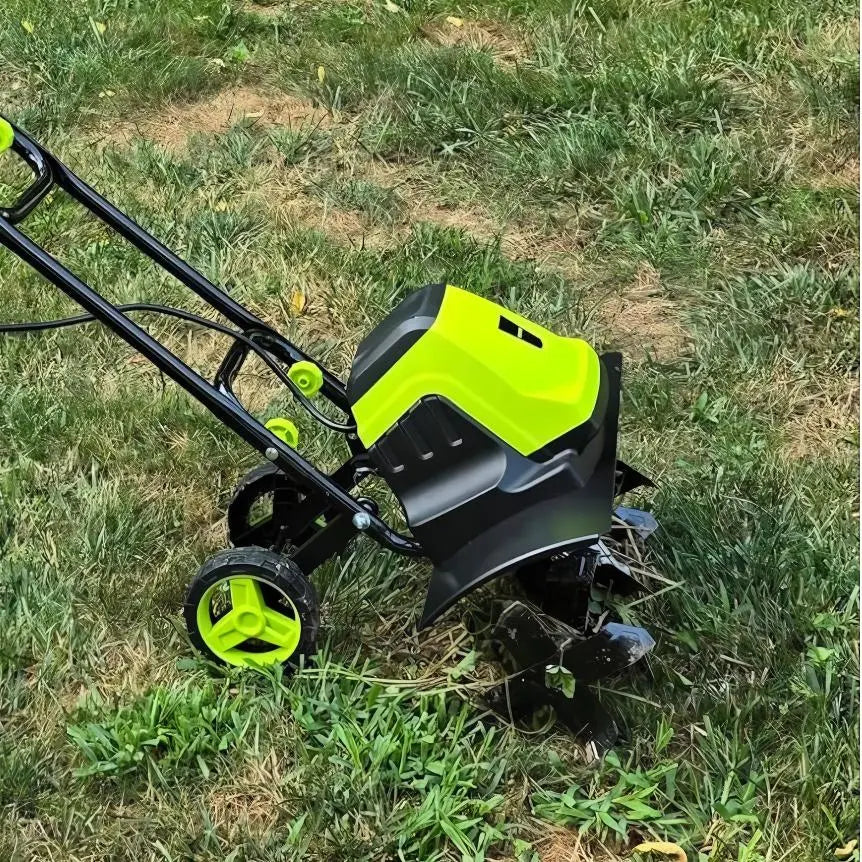What Soil Types and Seasons Are Best for an Electric Tiller?
The Electric Tiller is perfect for small gardens and home farms, working best in loose or moderately firm soil during spring and fall. It helps prepare seedbeds, manage weeds, and improve soil health with ease. This guide explains the ideal soil conditions, seasonal timing, and practical regional tips across the U.S., making it easier for beginners to achieve efficient and eco-friendly tilling.

In modern gardening and small-scale farming, the Electric Tiller has quickly become a go-to tool. It is quiet, environmentally friendly, and much easier to operate than traditional fuel-powered machines. But one question many beginners ask is: What kind of soil is it best for, and when should you use it during the year? This guide breaks down the essentials, focusing on U.S. soil conditions and seasonal timing.
What Soil Is Best for an Electric Tiller?
The Electric Tiller works best in loose or moderately firm soil. This includes sandy loam, garden beds that have been cultivated before, or soil with balanced moisture. These conditions allow the machine to dig efficiently without straining the motor.
-
Ideal soils: Sandy loam, loamy soils with moderate moisture, and pre-cultivated garden beds.
-
Challenging soils: Dry, sandy soil or compacted ground. In such cases, operate at a lower speed and work gradually.
-
Not recommended: Heavy clay, untouched virgin ground, or soil filled with large rocks. For these, a gas-powered tiller or tractor is more effective.
Because of its low noise and zero emissions, an Electric Tiller is also ideal for urban gardens and suburban yards where neighbors are nearby.
Best Seasons for Tilling
The main seasons for using an Electric Tiller in the U.S. are spring and fall.
-
Spring: Perfect for breaking up soil after winter frost, improving aeration, and preparing seedbeds for crops such as corn and beans. It’s also great for removing early weeds.
-
Summer: While not the prime season, the tiller can help after harvest to clear debris, manage weeds, or prepare plots for late-season crops.
-
Fall: Excellent for incorporating crop residue, planting cover crops, and conditioning soil for the next spring.
Regional Tips Across the U.S.
-
Midwest and Northeast: Wait until spring soils dry slightly after thawing; tilling too early can cause compaction.
-
Southeast: Earlier spring tilling is possible, but choose days when the soil is not overly wet from rainfall.
-
Western dry regions: The best time is two to three days after irrigation, when soil moisture is balanced.
-
Mountain areas: Short growing seasons make spring tilling right after thaw critical.
Practical Tips for Beginners
-
Clear the ground of rocks, sticks, or debris before tilling.
-
Check the battery if using a cordless Electric Tiller—carry a spare for larger plots.
-
Adjust depth settings: 4–6 inches is sufficient for most crops.
-
Maintain the blades: Clean and sharpen regularly for better efficiency.
Final Thoughts
For small farms and home gardens, the Electric Tiller is an excellent choice. It performs best in loose to medium soils and during the spring and fall seasons. By matching the tool to your soil type and local climate, you’ll save time, reduce labor, and create healthier soil for stronger crops.
